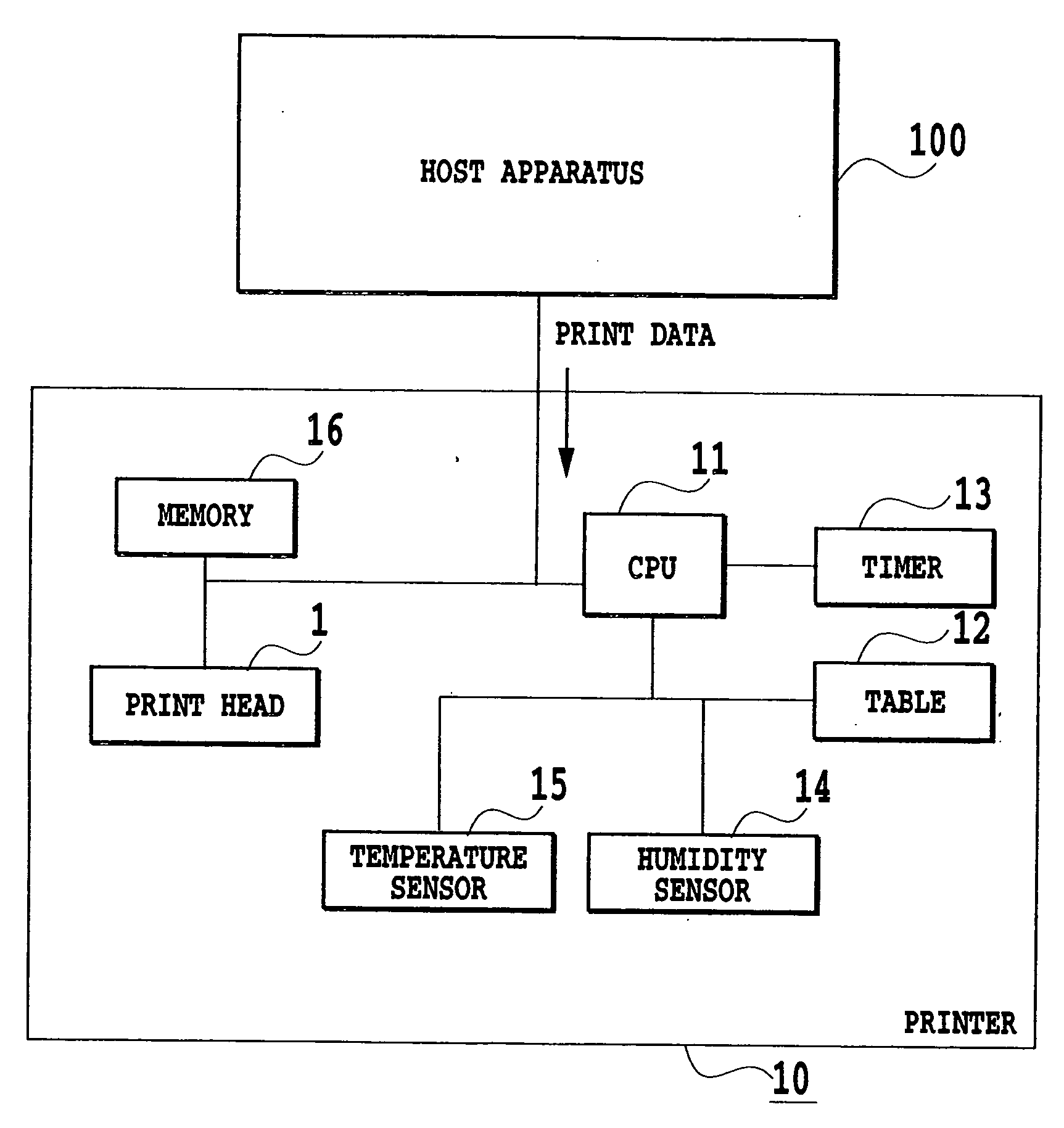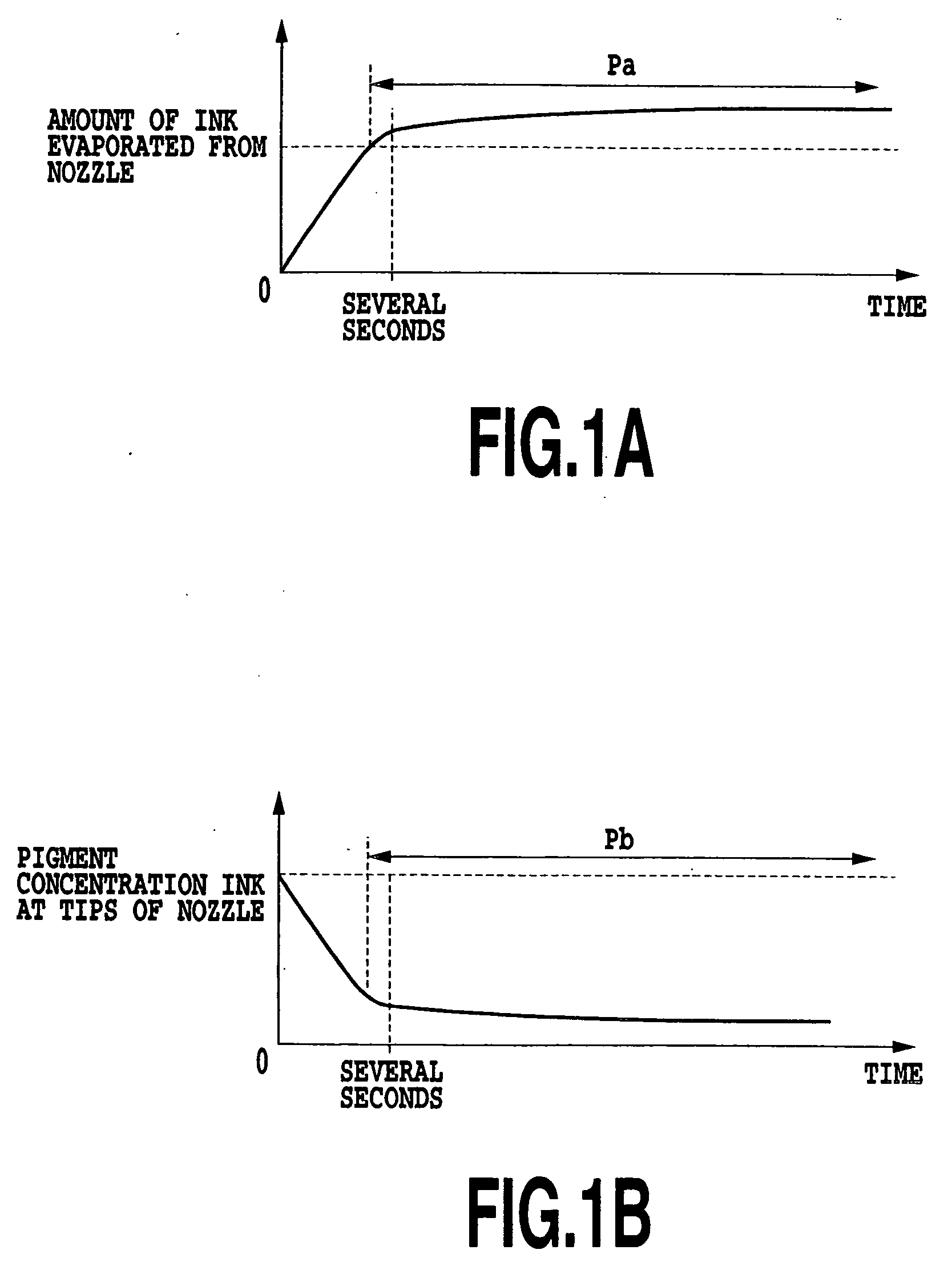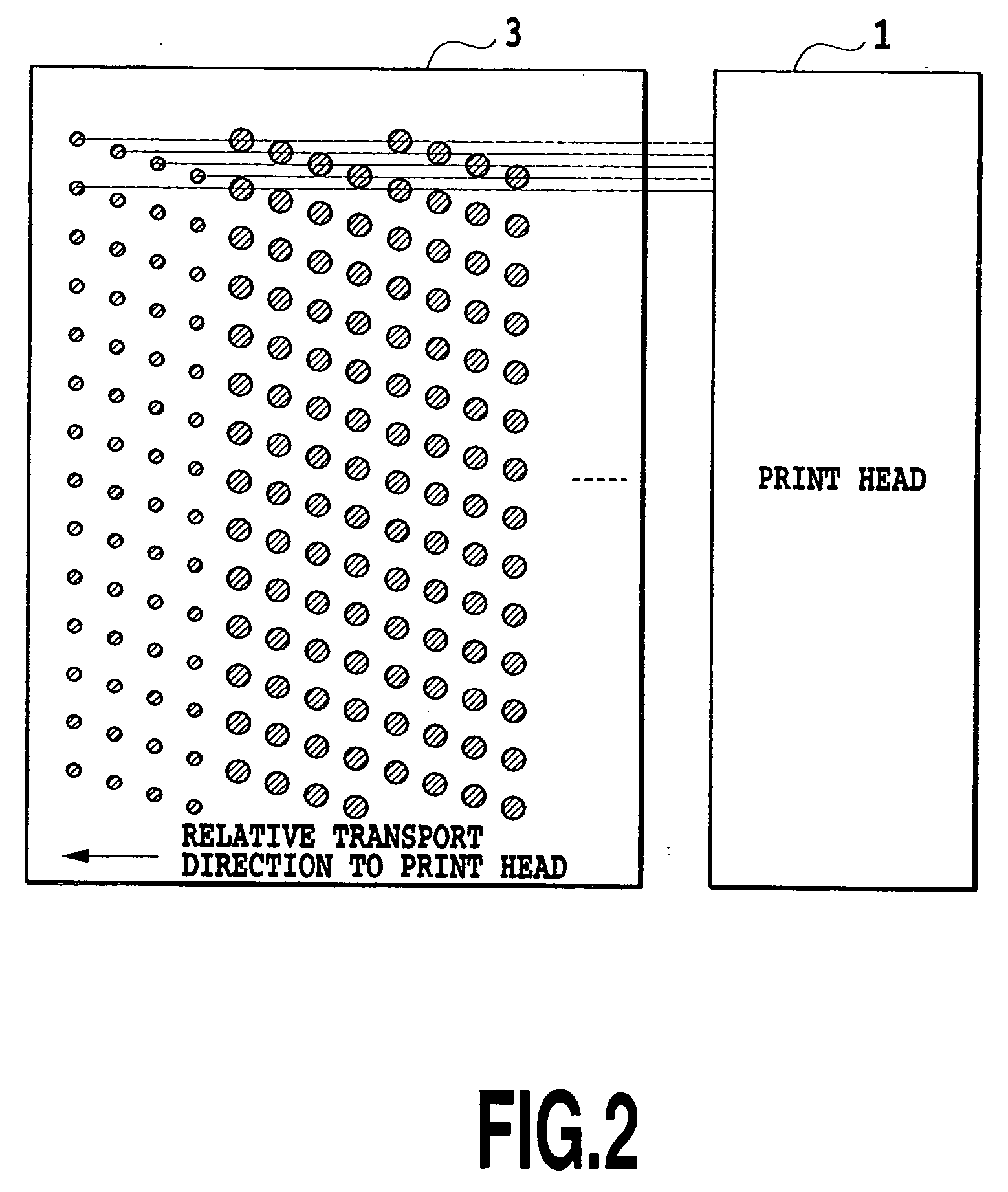Ink jet printing apparatus and preliminary ejecting method
a printing apparatus and ejection method technology, applied in printing and other directions, can solve problems such as defective ejection, and achieve the effects of reducing the amount of ink ejection, and reducing the optical density
- Summary
- Abstract
- Description
- Claims
- Application Information
AI Technical Summary
Benefits of technology
Problems solved by technology
Method used
Image
Examples
Embodiment Construction
[0036] A preferred embodiment of the present invention will be described below in detail with reference to the drawings.
[0037]FIGS. 1A and 1B are graphs showing a variation in the amount of ink solvent evaporated and a variation in the concentration of a pigment in ink present in the vicinity of nozzles, vs. an elapsed time after the last ejection through each of nozzles in a print head respectively.
[0038] As shown in FIG. 1A, the evaporation of moisture in the ink progresses within a relatively short time on the order of several seconds after the last ejection, but subsequently the amount of moisture evaporated does not significantly increase. It can be considered that a thin film is formed on the surface of the ink, which forms meniscus, within time (several seconds) much shorter than the interval for the conventional preliminary ejecting operation and the film then serves to reduce the subsequent evaporation. Such a film formed within several seconds can be basically removed by...
PUM
 Login to View More
Login to View More Abstract
Description
Claims
Application Information
 Login to View More
Login to View More - R&D
- Intellectual Property
- Life Sciences
- Materials
- Tech Scout
- Unparalleled Data Quality
- Higher Quality Content
- 60% Fewer Hallucinations
Browse by: Latest US Patents, China's latest patents, Technical Efficacy Thesaurus, Application Domain, Technology Topic, Popular Technical Reports.
© 2025 PatSnap. All rights reserved.Legal|Privacy policy|Modern Slavery Act Transparency Statement|Sitemap|About US| Contact US: help@patsnap.com



